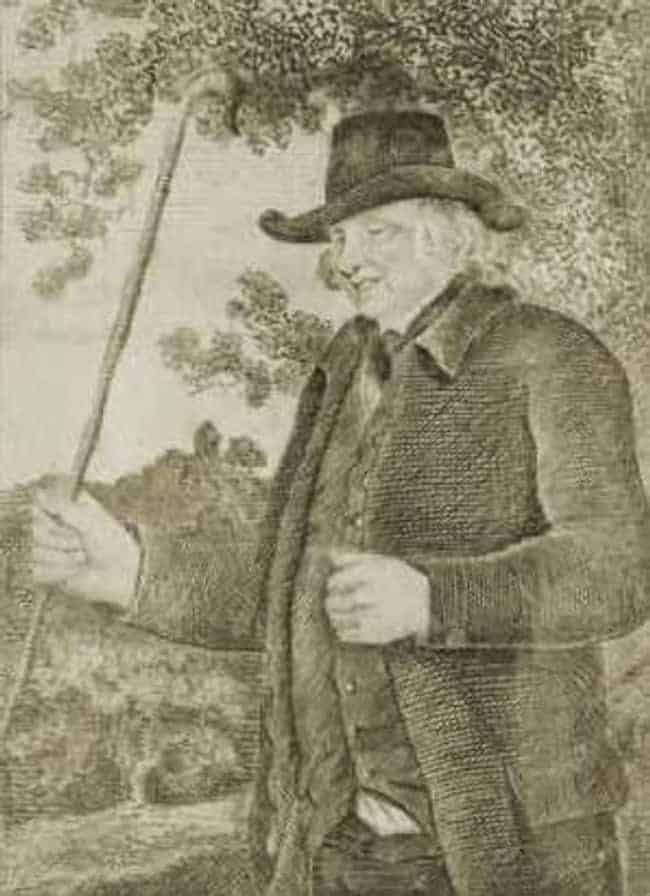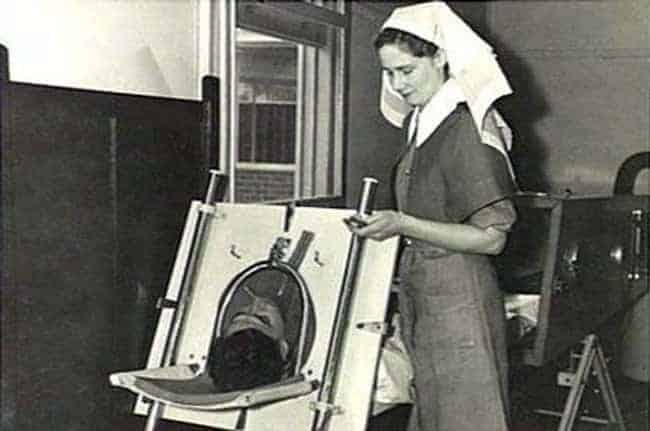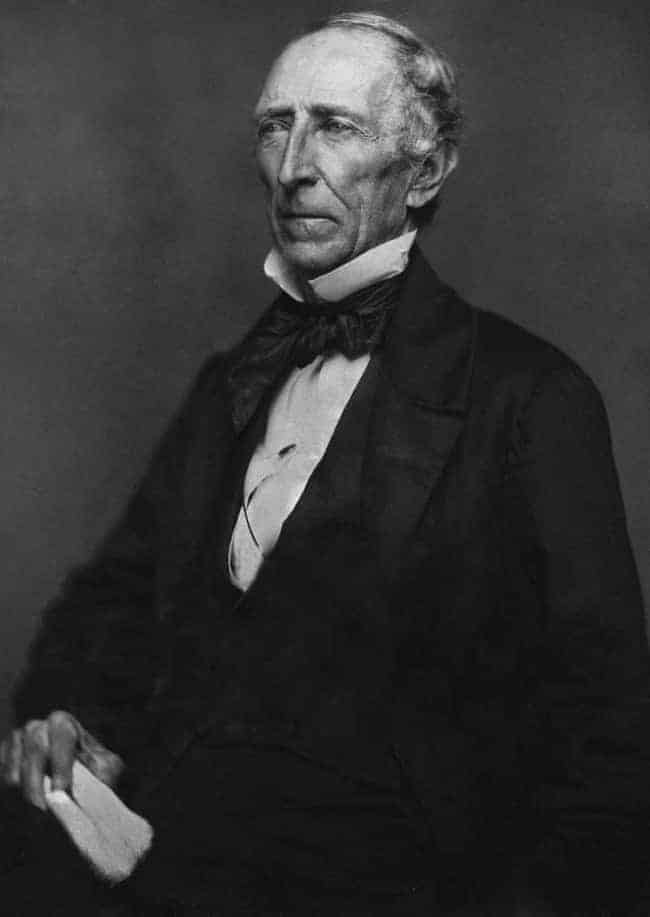Even if you have attended all of the history classes, there are a few fascinating facts that you might have missed. But don’t worry because we got your back.
We have listed 15 of the best historical facts that will make you say “really?”.
Ancient Roman Concrete Is So Durable Because It Was Mixed With Volcanic Ash

As Science Magazine explains, modern concrete can last about half a century before it begins to deteriorate. However, the concrete monuments of the Ancient Romans are not only still standing but growing stronger with each passing year.
According to Marcus Vitruvius, a Roman engineer writing in 30 BC, the Romans used a mixture of volcanic ash, lime, and sea water to make their concrete. Modern researchers have discovered that this volcanic ash, when exposed to sea water, creates aluminum tobermorite, “a very rare hydrothermal mineral” that forms stronger mineral bonds over time.
In 1530, Michelangelo Hid From The Pope For Three Months Underneath The Medici Chapel

The full story of this turbulent era of Florentine history is exciting, but it requires quite a bit of context. Long story short: famous Renaissance artist Michelangelo relied on the wealthy Medici family for patronage, but then joined up with a group of folks who thought the Medicis were way too powerful for their own good. The Medicis responded in predictable fashion: they used their wealth and power to absolutely crush this rebellion. It helped that the pope at the time, Clement VII, was himself a Medici.
While his fellow Florentines were being wiped out, Michelangelo hid himself underneath the Medici Chapel, which he’d been designing prior to the conflict. He stayed in there for three months, doodling on the walls and expecting to be discovered and slain at any moment, until he received word that he and the pope were cool again.
That was in November 1530. The room where Michelangelo hid wasn’t discovered until 1976, and it is occasionally opened up to the public for viewing.
Snow Globes Were Invented In A Failed Attempt To Build A Better Light Bulb

The snowglobe was invented by Erwin Perzy in 1900. According to his grandson, Perzy was an engineer that specialized in designing medical tools. This was at a time when doctors were using electric lights for their surgical operation rooms, but the light wasn’t very bright. Perzy was asked to improve them.
Apparently, shoemakers in this era would fill glass balls with water in order to magnify the lights of their candles. Perzy attempted to do the same with electric light, but was unsuccessful. He tried filling the globes with metal to better reflect the light, but the metal sank. He then tried semolina flakes, and these swirled in the water and remained afloat.
The result reminded Perzy of falling snow, and he added a tiny church into the globe for fun. He later applied for a patent for his “Glassball with Snow Effect.”
Though Blind From The Age Of Six, England’s John Metcalf Was A Pioneering Road Builder In The 18th Century

Born in 1717, John Metcalf lost his sight to smallpox at the age of six. Yet he was able to live an incredibly prosperous life, most notably building about 180 miles of road in Yorkshire, Lancashire, and Derbyshire. According to Historic UK, parts of these roads (the A59 and A61) still exist today.
Metcalf is popularly known as “Blind Jack,” and in addition to his road-building ventures, he learned to play the fiddle, joined a militia, operate a stagecoach company, and is remembered by his native Knaresborough as one of their most celebrated citizens.
The USA’s Original $1 Bill Sported A Portrait Of Salmon P. Chase

The first one-dollar bill was printed in 1862, and featured a portrait of Salmon P. Chase, the Secretary of the US Treasury under President Abraham Lincoln (1861-1864).
As the official US Treasury website explains, “In his new position, Chase was faced with the formidable challenge of financing the Civil War. In order to do so, Chase implemented the Nation’s first income tax and developed a national currency, known as the ‘green backs’ because of the color.”
George Washington’s face would not appear on the bill until 1869.
There Remain Two Survivors Of The Polio Epidemic That Rely On Iron Lungs

In May 2020, the Guardian published a moving profile of Paul Alexander, who contracted polio in 1952 at the age of six. The description of what the experience was like for him – being encased in an iron lung because he could no longer breathe for himself, and watching fellow victims die around him – is vividly disturbing. It is a stark reminder that humanity is always at the mercy of deadly viruses, and polio was one of the cruelest.
After years of suffering, Alexander was able to spend some time outside of the lung, but he could not sleep without it. Now, at 74, he is permanently confined to it again. Alexander is one of two victims of the polio epidemic still using an iron lung today. The last person in the UK to use one passed in 2017.
A 19th Century Couple Is Buried On The Runway Of Savannah Hilton Head International Airport

If you happen to visit Georgia’s Savannah Hilton Head International Airport, you might catch a glimpse of two rectangular slabs embedded in the asphalt near runways 10 and 28. These are the graves of Catherine Dotson and her husband Richard, who passed in 1877 and 1884, respectively.
The couple farmed the land that later became the airport, and were laid to rest in a family cemetery – among 100 others. Most of the other graves were removed when the airport was created, but the Dotsons’ descendants did not wish to remove Richard and Catherine.
And if you’re curious, yes, there are totally ghost stories about this airport.
President John Tyler’s Coffin Was Draped In A Confederate Flag

Dubbed “His Accidency” by his detractors, President John Tyler was the first Vice President to become President following the death of his superior. For various reasons, he’s usually ranked among the worst American presidents.
It is perhaps unsurprising, then, that Tyler went all in on the Confederacy. Tyler voted for Virginia to secede and was elected to the Confederate House of Representatives. He perished on January 18, 1862, before he could serve.
His coffin was draped in a Confederate flag when he was interred in a Richmond cemetery. History notes that Lincoln “did not issue the customary official proclamation to observe Tyler’s passing,” and Tyler’s New York Times obituary proclaimed him “the most unpopular public man that had ever held any office in the United States.”
The Origin Of The Joker, A DC Comics Villain, Can Be Traced Back To 1869

Batman’s arch-nemesis, the Joker, was created by Bob Kane, Bill Finger, and Jerry Robinson. According to the Hollywood Reporter, these men differ on the specifics of the Joker’s origin, but they all agree that the inspiration was the character of Gwynplaine – as played by Conrad Veidt in the 1928 film The Man Who Laughs.
Even a cursory glance at a still from this silent film confirms this – especially when comparing Veidt’s makeup to Joker’s initial 1940 appearance.
The 1928 film was an adaptation of Victor Hugo’s 1869 novel L’Homme qui rit. It’s a tale with similar themes to Hugo’s The Hunchback of Notre Dame, featuring a central character who is physically disfigured but kind of heart.
King Louis XVI’s Own Cousin Condemned Him To Execution

You may be aware that the French Revolution did away with King Louis XVI, and his wife Marie Antoinette, but you may not know that the king was condemned to execution by a democratic vote. One of the men who voted for Louis’s beheading was Louis-Philippe-Joseph, a Bourbon prince and Louis’s cousin. He renounced his title of nobility during the revolution and took the name Philippe Égalité.
Unfortunately for Égalité, he too would meet the guillotine in November 1793. His son, Louis-Philippe, would later reign as King of the French from 1830-1848.
The Viking Warrior Buried In The Birka Tomb Is Female

While Viking “shield maidens” have long been a part of Scandinavian storytelling, historians are uncertain how frequently Viking women fought alongside male warriors. Yet the warrior discovered in Sweden’s Birka tomb is unquestionably female.
Filled with weapons, a shield, two horses, and what appears to be a board for military planning, this grave (discovered in 1878) was long thought to house a warrior of high social standing. Researchers analyzed the body’s genome in 2017, and then again in 2019, and both times confirmed the warrior was female.
Given the preponderance of other treasures and weapons, and the fact the body was buried by a garrison and hillfort, researchers point out the “obvious and logical conclusion” is that this was a respected, professional warrior.
Pompeii Wasn’t The Only Roman Town Destroyed By Mount Vesuvius

Though Pompeii grabs all the headlines, it has a “little sister” town, Herculaneum, that is even better preserved than Pompeii. Though much smaller than its sibling, the town boasted a wealthier population, with finer art and more elaborate private villas than Pompeii.
Located 10 miles north of Pompeii, the town suffered the same fate, but was buried under considerably more volcanic ash (50 feet compared to 16 feet at Pompeii). According to the Ancient Encyclopedia, a modern tour of the site offers views of “two-story buildings, wooden furniture, traces of wooden stairways and balconies, luxurious patrician villas and even merchant shops with their original wooden shelves holding amphorae.”
Some Cars In The 1950s And ’60s Were Equipped With Record Players

The first auto record player was Chrysler’s “Highway Hi-Fi,” which debuted in 1956. The 7-inch vinyl discs were designed by CBS Labs and “available exclusively from Columbia Records,” according to Consumer Reports.
This size was chosen because 12-inch records were too big and 45s didn’t offer long enough play times. The “Highway Hi-Fi” offered about one hour of play per side.
Queen Elizabeth I Was Fluent In At Least Five Languages

So, the Internet loves to throw all sorts of numbers around when it comes to Queen Elizabeth I’s talent for languages. Some websites go so far as to say this royal polyglot could speak 10 of them.
The most reliable source this writer has found on the subject is this Masters Thesis from the University of Central Florida. Elizabeth was trained by the scholar Roger Ascham, and he was quite proud of his pupil. According to him, Elizabeth was fluent in Latin, Italian, French, and Spanish – and was also learning Greek.
The Beak Of The Infamous Plague Doctor Mask Contained Herbs To Protect The Wearer From ‘Dangerous’ Odors

Germ theory wasn’t a thing in the 17th century. Instead, doctors believed that diseases were spread by foul air. Physician Charles de Lorme created the plague outfit to insulate himself from that “dangerous” miasma. As National Geographic explains,
physicians believed that the plague spread through poisoned air that could create an imbalance in a person’s humors, or bodily fluids. Sweet and pungent perfumes were thought to be able to fumigate plague-stricken areas and protect the smeller…
Thus, doctors loaded the beak up with a potpourri of herbs, including “viper flesh powder, cinnamon, myrrh, and honey.” The beak needed to be lengthy to give the air enough time to be “purified” by the herbs.









